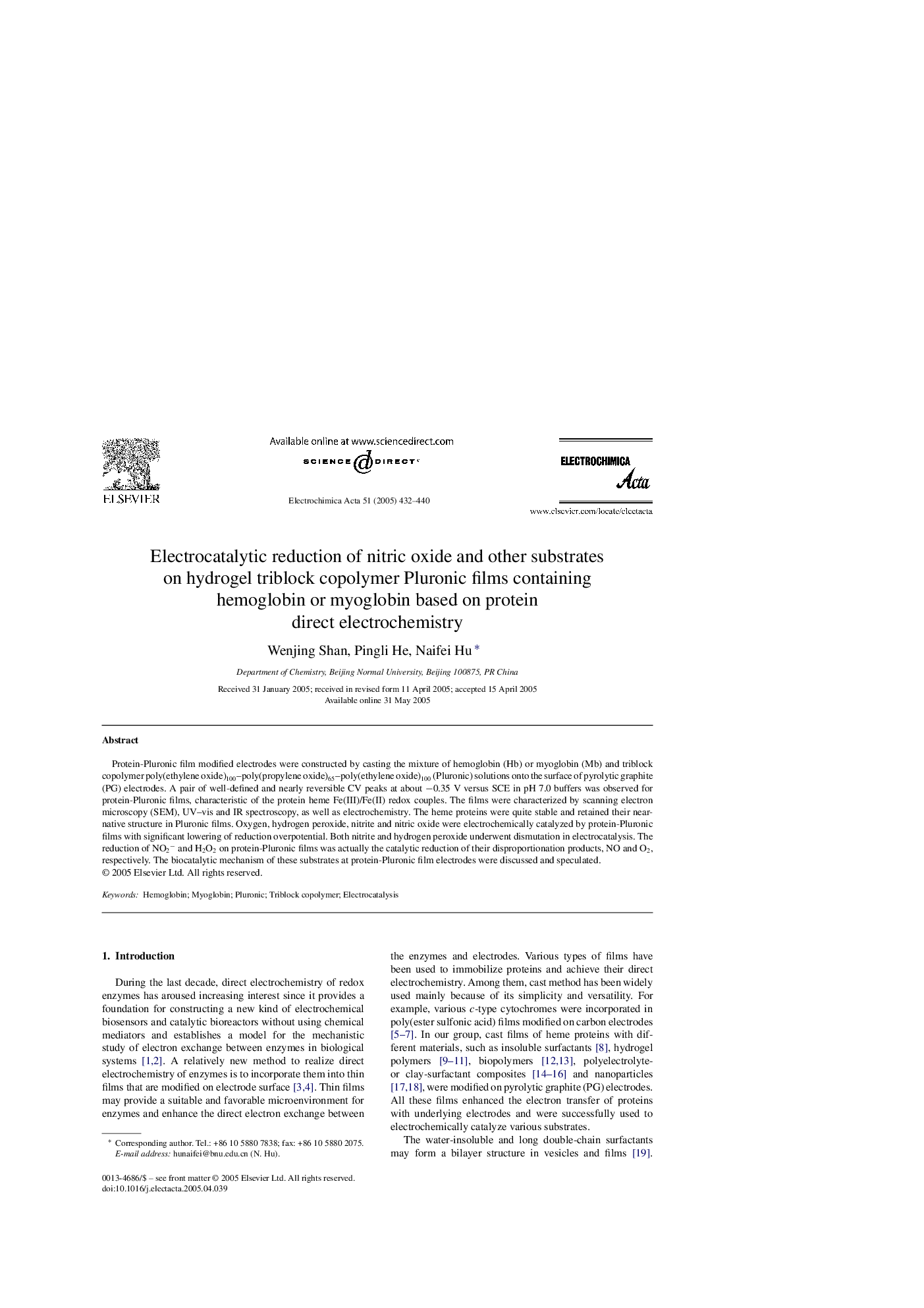| Article ID | Journal | Published Year | Pages | File Type |
|---|---|---|---|---|
| 10269476 | Electrochimica Acta | 2005 | 9 Pages |
Abstract
Protein-Pluronic film modified electrodes were constructed by casting the mixture of hemoglobin (Hb) or myoglobin (Mb) and triblock copolymer poly(ethylene oxide)100-poly(propylene oxide)65-poly(ethylene oxide)100 (Pluronic) solutions onto the surface of pyrolytic graphite (PG) electrodes. A pair of well-defined and nearly reversible CV peaks at about â0.35 V versus SCE in pH 7.0 buffers was observed for protein-Pluronic films, characteristic of the protein heme Fe(III)/Fe(II) redox couples. The films were characterized by scanning electron microscopy (SEM), UV-vis and IR spectroscopy, as well as electrochemistry. The heme proteins were quite stable and retained their near-native structure in Pluronic films. Oxygen, hydrogen peroxide, nitrite and nitric oxide were electrochemically catalyzed by protein-Pluronic films with significant lowering of reduction overpotential. Both nitrite and hydrogen peroxide underwent dismutation in electrocatalysis. The reduction of NO2â and H2O2 on protein-Pluronic films was actually the catalytic reduction of their disproportionation products, NO and O2, respectively. The biocatalytic mechanism of these substrates at protein-Pluronic film electrodes were discussed and speculated.
Related Topics
Physical Sciences and Engineering
Chemical Engineering
Chemical Engineering (General)
Authors
Wenjing Shan, Pingli He, Naifei Hu,
